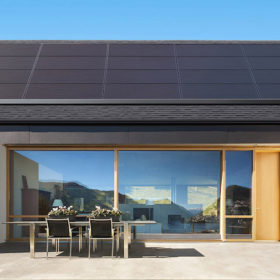
Elon Musk is trying just about everything to reimagine the solar business. But will this one work?
Earlier this decade, the rise of third-party solar upended the U.S. residential solar market. Leases and power purchase agreements allowed companies like Sunrun, SolarCity, Vivint and Sungevity to provide rooftop solar to the masses in a way that eliminated the big up-front costs and credit checks associated with buying a $30,000 attachment to your home, and rapidly became the dominant business model.
But as loans got more sophisticated and Tesla moved SolarCity away from its path of aggressive sales and growth, the third-party solar market contracted. Currently the space has several successful companies, but most residential solar is sold through loans and direct purchases, and market leaders Sunrun and Vivint are plagued by ballooning customer acquisition costs.
As usual, Tesla is charting its own path. In a series of tweets on Sunday morning, Elon Musk revealed a new strategy: renting solar. The company is offering to rent homeowners a small, medium or large PV system, at $50-$195 per month, for systems ranging from 3.8 kW to 11.4 kW in capacity.
On Twitter, Musk was characteristically bullish about the ability of the offering to save customers money, estimating that this will save customers around $500 annually.
With the new lower Tesla pricing, it’s like having a money printer on your roof if you live a state with high electricity costs. Still better to buy, but the rental option makes the economics obvious.
— Elon Musk (@elonmusk) August 18, 2019
The rental option eliminates any long-term contract, but there is a charge of $1,500 to remove the system at the end of the rental period. Which may explain why other companies have not yet tried this option: A PV system is a semi-permanent attachment, and not exactly easy to remove once installed.
Solar rentals are currently only available in the service areas of 20 utilities in six states, and the Powerwall battery is not available in the rental deal.
The launch of the solar rental option comes directly on the heels of Tesla’s move to sell solar through its website, and like the rental option, the internet purchase option shows substantial savings through eliminating sales and many kinds of transaction costs. And while Tesla provides a calculator to show customer savings, it remains to be seen if the cost savings and ease of transaction alone will allow these options to turn around Tesla’s contracting share of the rooftop solar market.
In the second quarter of 2019, Tesla installed only 29 MW of solar – a fraction of its market share when SolarCity alone was responsible for around one-third of the U.S. residential solar market.
Lắp đặt điện mặt trời Khải Minh Tech
https://ift.tt/2X7bF6x
0906633505
info.khaiminhtech@gmail.com
80/39 Trần Quang Diệu, Phường 14, Quận 3
Lắp đặt điện mặt trời Khải Minh Tech
https://ift.tt/2ZH4TRU
Không có nhận xét nào:
Đăng nhận xét